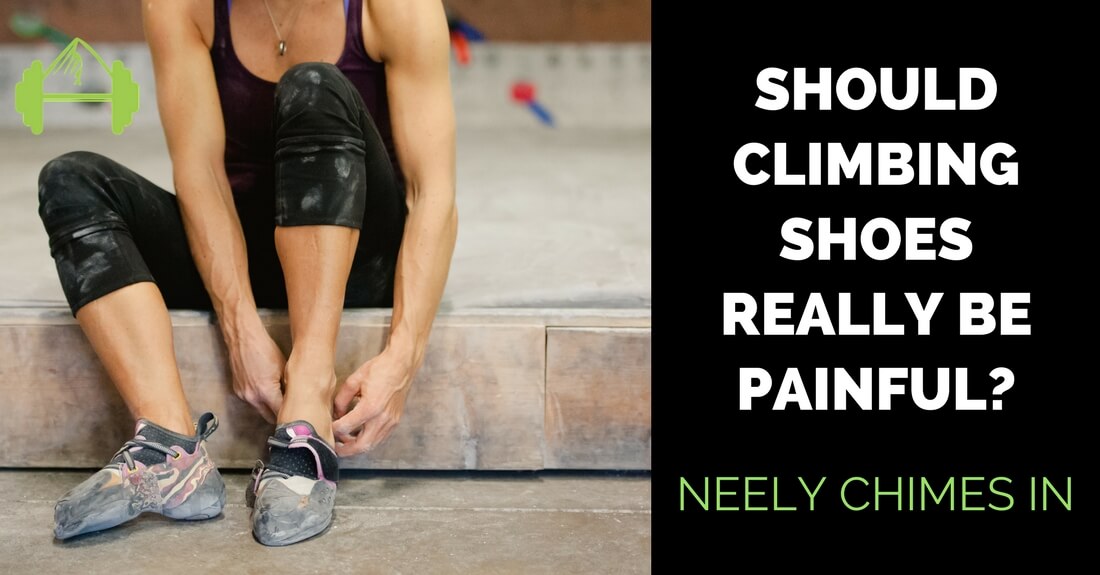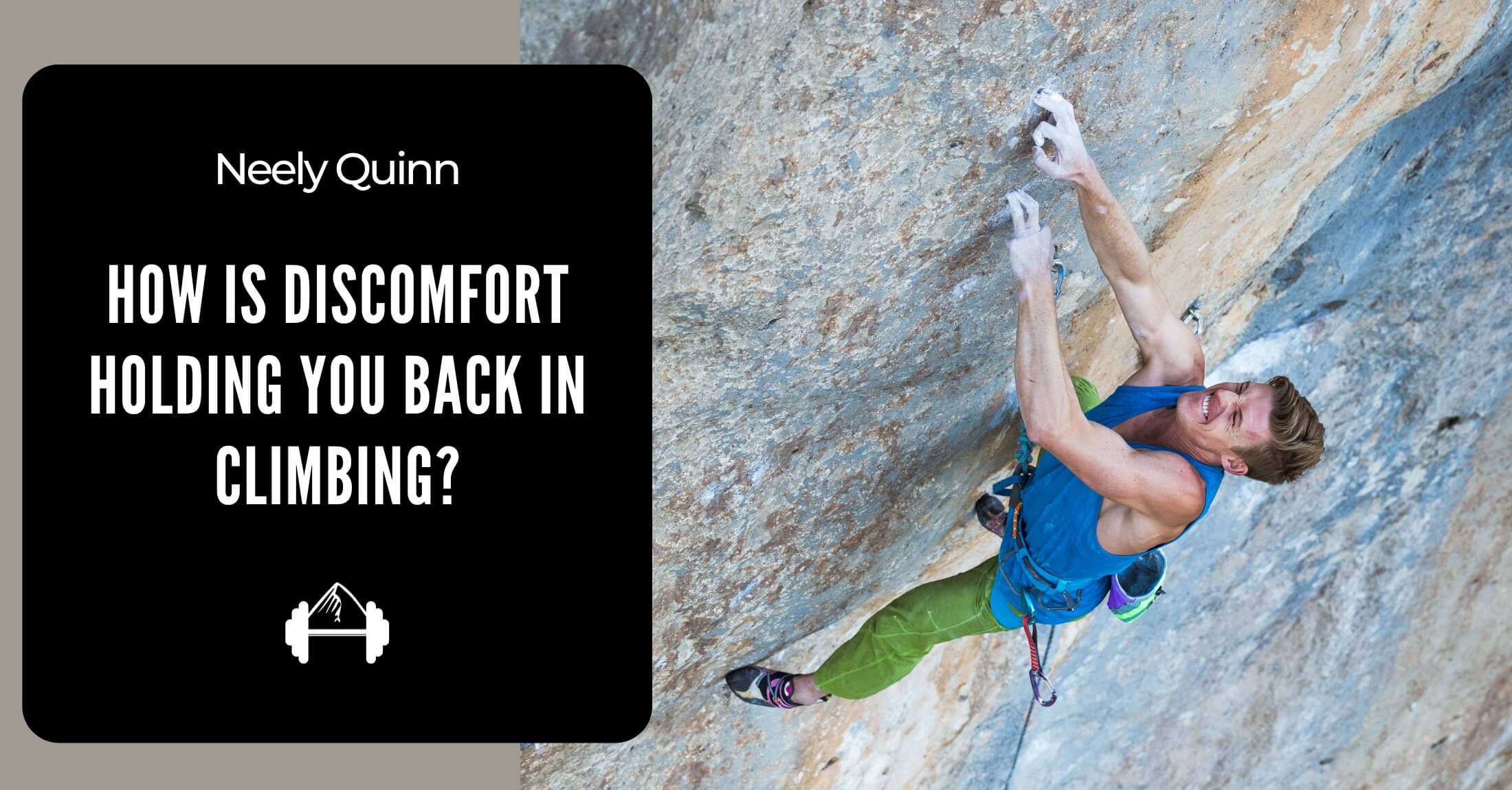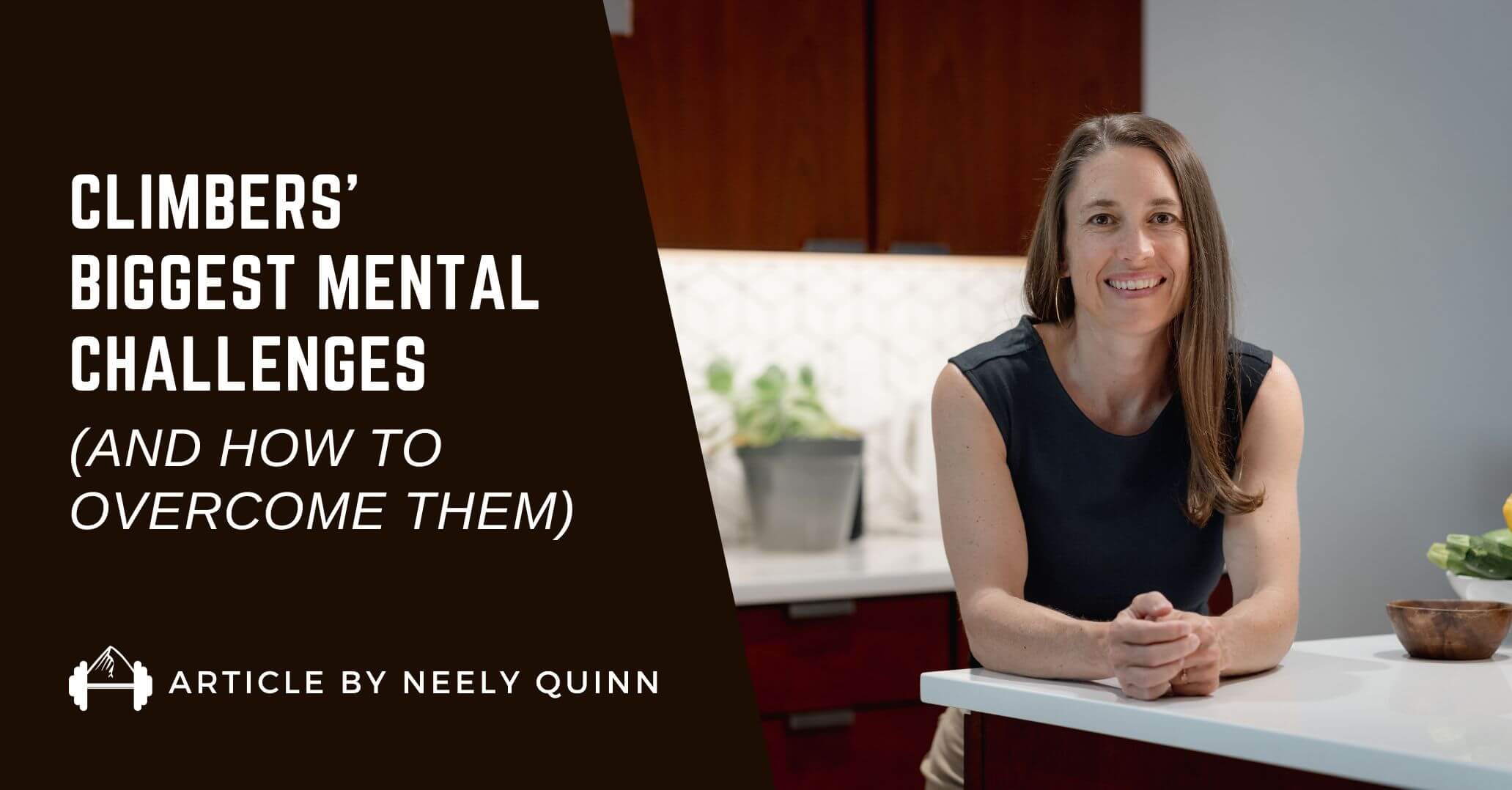Sometimes I look down at my oddly colored, punk-rock, ballet-looking shoes and wonder what non-climbers must think of us weirdos. But, despite being really weird looking, climbing shoes are quite possibly the most performance-enhancing pieces of equipment we use.
For some reason, it’s a widely held belief that our shoes should be torture chambers for our feet. That the tighter they are, the more we can feel the rock, so the tighter the better. But is that really true? How painful should climbing shoes really be?
I’ve gone through many phases of pain tolerance with shoes, and I think I’ve finally figured out the sweet spot, which I’ll call “high performance semi-comfort.”
To illustrate he absurdity of our masochistic beliefs as climbers, here’s a question from a reader about breaking in new shoes. My response is below.
Question from A Reader about Shoe Fit
Hi there,
I’m breaking in a new pair of shoes, and I’m not sure how much pain is too much pain. My shoes aren’t that aggressive (5.10 Rogues) and I’ve worn them for several sessions now — they’re still rubbing like crazy, and my toes feel smooshed in a pretty bad way.
A few specific questions:
- How long (in shoes-on-feet climbing terms – hours, pitches, problems, etc) does it take to break in new shoes? Is this time frame different for leather and synthetic?
- What sort of pains/problems are bad and indicate a different size is needed and what’s normal? My toes are crammed against the rubber toe cap in a way that is causing rubbing on the tops of my toes and discomfort in my nail beds. I also have some rubbing by my ankles, but that seems to be getting better over time.
- How does foot shape play into this? I have narrow feet and long toes.
- I assume moving to a more aggressive shoe means more discomfort. True?
- My previous shoes were probably a little big to be really effective, but they were SO comfortable that I could completely focus on climbing and not my discomfort. There seems to be a line in here that’s personal choice. What is the point of diminishing returns as far as getting comfy shoes go? At what point does a comfy shoe inhibit performance? Is that even a thing?
Thank you so much! I hope you’re having a great day.
E
My Response
Hi E,
Sorry to hear about your shoe problems. That sounds really uncomfortable.
First off, I’ll say that I used to wear my shoes super tight, and I’d have to break them in by putting them on, then stepping in a bathtub full of water, and then walking around the house with a grimace on my face for about 15 minutes in them. The water helped them get a little stretched out and molded them to my feet. After the water ritual, I’d wear them climbing, they’d get a little more stretched out after the first maybe 5-10 uses and they were tolerable but still pretty painful.
What Happened When I Sized Up My Shoes
After a long time–like 16 years of climbing–I decided to try a bigger pair of shoes (novel concept), and the only differences I’ve noticed are that:
A) My shoes are more tolerable to wear, and
B) I don’t have to break them in anymore.
Absolutely nothing happened to my climbing performance in relation to my shoe size. I really wish I’d sized up years ago.
I’ve worn the ladies’ Solutions by La Sportiva for the past 2 years (almost every time I climb), and from the moment I took them out of the box, they fit me really well. No smooshing, no rubbing, no stabbing pains anywhere. And after wearing them a bunch, they never stretched out too much, got too loose, or any other myth I used to believe. They just worked really well for me, and stayed snug for the entire 2 years.
I just bought a new pair in the correct size again, and I was so happy when I could just slip them on my feet and enjoy climbing with no rubbing, no cramping, or anything uncomfortable.
Disclaimer: These shoes are mostly leather, so I can’t speak for synthetic shoes. If anyone can attest to the stretchiness of synthetic shoes over time, please comment below.
Not as Loose as Street Shoes
I’m not saying my lady Solutions fit like street shoes: they don’t. They fit more snugly than that, and I still have callouses on the tops of my big toes from them. But they’re very tolerable and I still have all the sensitivity I need in my toes to feel the rock.
I still have to pull moderately hard to get them on my feet, and sometimes it takes a little readjusting of my little toes to make them not hurt. And when I’m done with a climb, I like to take them off as soon as possible. So they’re not LOOSE – let’s be clear. They’re just not painful while I’m climbing for a reasonable amount of time.
Honestly, I only sized up a half size from a 35 to a 35.5, but it’s amazing what a difference a few millimeters makes. Maybe I’ll size up even more now that I’m really thinking about it. Also, this isn’t a plug for Lady Solutions, although I think they’re awesome. They are super comfy in the size I own, but they are godawful even a half size down.
Why I Think Too-Small Shoes Are A Bad Idea
But back to you. I think you should get a different size and probably a different shoe. Even in the days when I DID wear smaller shoes, it never felt quite like what you’re describing.
Potential Injuries
That kind of pain and pressure on your feet can lead to serious problems, actually. I know one pro climber who had to have surgery on her foot due to wearing her shoes too tight. People also get ingrown toenails that have to be surgically removed (a family member of mine who’s a climber had that happen). Also, when you’re bouldering and you land on feet that are in shoes that are too small, you’re probably more likely to land on the outsides of your feet, which can exacerbate your chances of rolling your ankles or worse.
Distraction from Climbing
Besides injuring your feet and ankles, wearing shoes that are way too tight is not conducive to sending hard rock climbs. When you’re constantly distracted by pain, you’re probably not going to want to try hard. As you said yourself, “My previous shoes were probably a little big to be really effective, but they were SO comfortable that I could completely focus on climbing and not my discomfort.” So yeah, I totally agree that there’s a sweet spot somewhere, but I definitely don’t think it’s the shoes you have right now.
Finding The Right Shoe
Nowadays there are different shoes for every kind of foot. You may want to focus on the “women’s” shoe models due to your narrow feet.
Chris Weidner actually wrote a really good article for Climbing Magazine called “2012 Gear Guide: How to Buy – Rock Shoes“, which I highly suggest you check out. It’s really informative and detailed. It describes all the different parts of climbing shoes, a lot of the different options that are out there, and how they should fit.
I’m not really an expert on all the different shoes out there, since I’ve been wearing the same damn shoes for like 8 years now (I wore the Solutions for years before they made the Ladies’ Solution). So you’ll have to do some research and read some reviews of different shoes on blogs and amazon and other places.
In Conclusion…
Overall, I don’t think having a sort-of comfy shoe will inhibit performance. The shoe should ideally “fit like a glove” and we don’t think of gloves as being painful. I think Chris Weidner said it perfectly in his article:
When you’re first learning to climb, a snug, but comfortable fit should be a priority. As you progress in the sport, comfort may take a back seat to shoes that feel like they’re shrinkwrapped onto your foot, at least in those designed for difficult bouldering or sport climbing. But even a foot condom needs to fit your foot well—tight but not painful, no dead air space or pressure points, and good forefoot mobility.
I think, when buying a shoe, the most important thing is that you find one that feels good on your foot pretty much right out of the box; one that isn’t rubbing you in all the wrong places. Make sure you test out different brands if one brand just isn’t feeling perfect. There’s bound to be one that works for you!
About The Author
 Neely Quinn is the owner and founder of TrainingBeta.com. She’s been climbing since 1997, and has redpointed up to 5.13c. She climbs almost exclusively on slightly overhanging limestone and sandstone sport climbs, since pretty much all other forms of climbing elude her. Neely is also a nutrition therapist, and helps climbers figure out the right diet for optimal body weight, recovery, and energy levels. She lives in Boulder, Colorado with her husband, Seth Lytton (co-founder of TrainingBeta) and their dog, Zala.
Neely Quinn is the owner and founder of TrainingBeta.com. She’s been climbing since 1997, and has redpointed up to 5.13c. She climbs almost exclusively on slightly overhanging limestone and sandstone sport climbs, since pretty much all other forms of climbing elude her. Neely is also a nutrition therapist, and helps climbers figure out the right diet for optimal body weight, recovery, and energy levels. She lives in Boulder, Colorado with her husband, Seth Lytton (co-founder of TrainingBeta) and their dog, Zala.
About The Author
 Neely Quinn is the owner and founder of TrainingBeta.com. She’s been climbing since 1997, and has redpointed up to 5.13c. She climbs almost exclusively on slightly overhanging limestone and sandstone sport climbs, since pretty much all other forms of climbing elude her. Neely is also a nutrition therapist, and helps climbers figure out the right diet for optimal body weight, recovery, and energy levels. She lives in Boulder, Colorado with her husband, Seth Lytton (co-founder of TrainingBeta) and their dog, Zala.
Neely Quinn is the owner and founder of TrainingBeta.com. She’s been climbing since 1997, and has redpointed up to 5.13c. She climbs almost exclusively on slightly overhanging limestone and sandstone sport climbs, since pretty much all other forms of climbing elude her. Neely is also a nutrition therapist, and helps climbers figure out the right diet for optimal body weight, recovery, and energy levels. She lives in Boulder, Colorado with her husband, Seth Lytton (co-founder of TrainingBeta) and their dog, Zala.





Thanks for the article. I think the most important part is to find the best for your feet. And sometimes make different brand for feeling perfect. Have a great day.
Great article!
Synthetic stretch will depend on the material. This is my understanding:
Something like Nylon has a high modulus of elasticity (stretch factor) with dynamic stretch. It deforms and then slowly comes back to true when not loaded.
Polyester has a really low stretch factor, and what stretch does occur is static. So it will deform minutely and stay deformed. It won’t stretch beyond the initial deformation though.
Polyester is a common material in synthetic leathers but they can also be made from paper (rare in shoe materials unless they’re cheap). Nowadays the cheaper stuff is fabric with a PVC coating. I doubt that anyone would make climbing shoes from that. 🙂
Thank you! the sales person will always tell you to get a size down but bear in mind when you climb your feet will swell up and that size down becomes increasingly painful!
Thanks for sharing your response about climbing shoes! This is useful and certainly a good reminder to all of us.
Thanks for this great article! What size is your street shoe size compared to your solutions?
Hi Caroline – I wear size 6.5 or 7 US women’s street shoes and I wear a 35.5 EU climbing shoe. So a 6.5 or 7 US is about a 37 or 38 in EU sizing, and 35.5 EU is about a 4.5 or 5 in women’s. I guess I size down quite a bit…